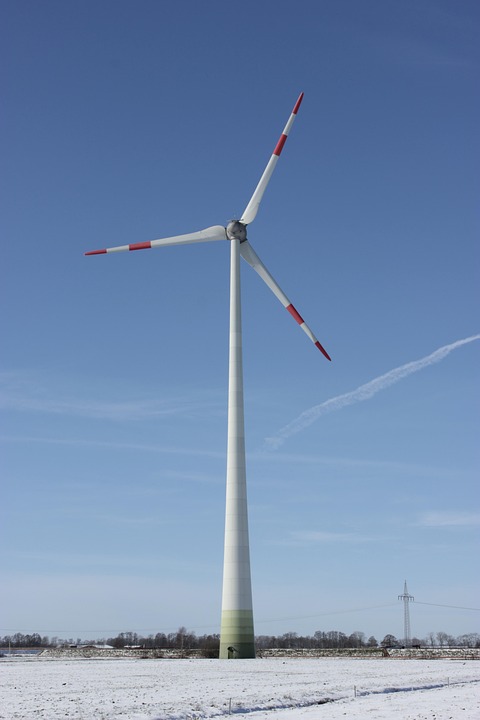The Power of Tomorrow: Harnessing the Potential of Renewable Energy
Renewable energy is the future. As the world grapples with the effects of climate change and dwindling fossil fuel reserves, the need for sustainable energy sources has never been more urgent. Harnessing the power of renewable energy not only helps reduce carbon emissions but also creates new opportunities for economic growth and innovation. In this article, we will explore the potential of renewable energy and how it can shape the future of our planet.
What is Renewable Energy?
Renewable energy is energy that is generated from natural resources that are constantly replenished, such as sunlight, wind, and water. Unlike fossil fuels, which are finite and contribute to greenhouse gas emissions, renewable energy sources are clean, abundant, and inexhaustible. By harnessing these sources of energy, we can reduce our dependence on fossil fuels and mitigate the impact of climate change.
The Benefits of Renewable Energy
There are numerous benefits to using renewable energy. One of the most significant advantages is its environmental impact. Unlike fossil fuels, which release harmful pollutants into the atmosphere when burned, renewable energy sources produce little to no emissions. This helps reduce air pollution, improve public health, and combat climate change.
Renewable energy also helps create new job opportunities and stimulate economic growth. According to the International Renewable Energy Agency (IRENA), the renewable energy sector employed more than 11 million people globally in 2018. As the demand for renewable energy continues to grow, so too will the job market in this sector.
Furthermore, renewable energy sources are abundant and widely available, making them a reliable and sustainable source of power. Solar panels can be installed on rooftops, wind turbines can be erected in open fields, and hydroelectric dams can be built near rivers. By diversifying our energy sources and tapping into these renewable resources, we can ensure a stable and resilient energy supply for the future.
The Potential of Renewable Energy
The potential of renewable energy is vast. According to the International Energy Agency (IEA), renewable energy sources could provide up to 85% of global electricity by 2050 if the right policies and investments are put in place. This would not only help reduce carbon emissions but also create new opportunities for innovation and growth in the energy sector.
Solar energy, in particular, has enormous potential. The sun provides more energy in one hour than the entire world consumes in a year. By harnessing this abundant source of energy through solar panels, we can power homes, businesses, and even entire cities with clean, renewable power. Wind energy is also a rapidly growing source of renewable energy, with wind turbines now capable of producing electricity at competitive prices with traditional fossil fuels.
Hydropower, geothermal energy, and biomass are other promising sources of renewable energy that can help meet our energy needs in a sustainable and environmentally friendly way. By investing in these technologies and scaling up their deployment, we can transition to a low-carbon economy and secure a more sustainable future for generations to come.
Challenges and Opportunities
While the potential of renewable energy is vast, there are still challenges that must be overcome to fully harness its power. One of the biggest challenges is the intermittency of renewable energy sources. Unlike fossil fuels, which can be burned on demand, renewable energy sources such as solar and wind are dependent on weather conditions and time of day.
To address this challenge, we need to invest in energy storage technologies such as batteries and pumped hydro storage. These technologies can store excess energy generated during periods of high production and release it when demand is high. By integrating energy storage into our power grids, we can ensure a reliable and stable energy supply from renewable sources.
Policy and regulatory barriers also pose a challenge to the widespread adoption of renewable energy. In many countries, fossil fuels are still heavily subsidized, making it difficult for renewable energy to compete on a level playing field. By removing subsidies for fossil fuels and implementing policies that support renewable energy development, we can accelerate the transition to a clean energy future.
Despite these challenges, there are also numerous opportunities for innovation and growth in the renewable energy sector. Advances in technology, such as improvements in solar panel efficiency and wind turbine design, are making renewable energy more cost-effective and competitive with traditional fossil fuels. In addition, the falling costs of renewable energy technologies are driving investment and deployment on a global scale.
The Role of Individuals and Businesses
Individuals and businesses also play a crucial role in the transition to renewable energy. By making sustainable choices in our daily lives, such as using energy-efficient appliances, driving electric vehicles, and supporting renewable energy initiatives, we can reduce our carbon footprint and contribute to a more sustainable future.
Businesses can also lead the way in adopting renewable energy solutions. Many companies are now investing in renewable energy projects, such as solar farms and wind turbines, to power their operations and reduce their environmental impact. By embracing renewable energy, businesses can not only save money on energy costs but also enhance their reputation and attract environmentally conscious customers.
Conclusion
The power of tomorrow lies in renewable energy. By harnessing the potential of solar, wind, hydropower, and other renewable sources, we can create a more sustainable and prosperous future for generations to come. While there are challenges to overcome, the benefits of renewable energy far outweigh the costs. By investing in renewable energy technologies, supporting policies that promote clean energy, and making sustainable choices in our daily lives, we can accelerate the transition to a low-carbon economy and secure a more resilient and sustainable future for all.












